
Original Link: https://www.anandtech.com/show/1683
Sony Introduces Playstation 3, to launch in 2006
by Anand Lal Shimpi on May 16, 2005 9:12 PM EST- Posted in
- Trade Shows
When Microsoft introduced the Xbox 360, they did so with a complete media blitz - combining their MTV special with their ourcolony.net viral marketing online, not to mention all of the leaks that kept all surfers busy for the past several months.

Over 2000 people wait in line to get into Sony's press conference
Sony's approach is a bit different; they've been extremely quiet about the new platform and their marketing has been kept to a minimum. But don't confuse Sony's quiet demeanor with a lack of things to talk about, in fact, Sony actually had a lot more to talk about than Microsoft...
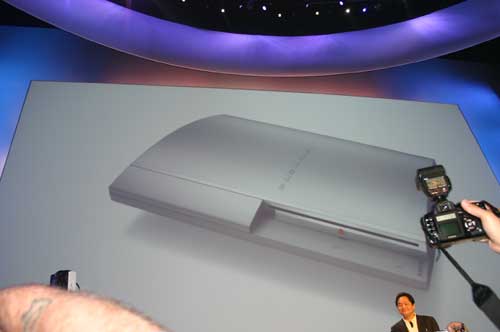
Introducing the Playstation 3
Ken Kutaragi, President and Group CEO of Sony Computer Entertainment, lead the introduction to most of the Playstation 3 specifications. For starters, the console will not be out until Spring 2006 - contrary to recent rumors.
The console itself will be available in three colors - white, grey and black:


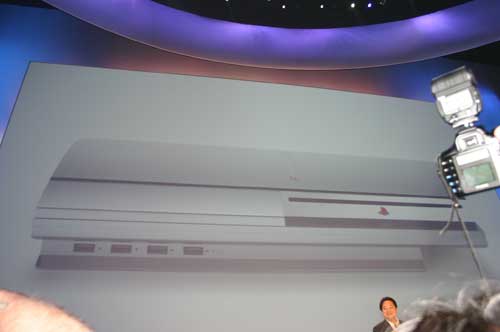
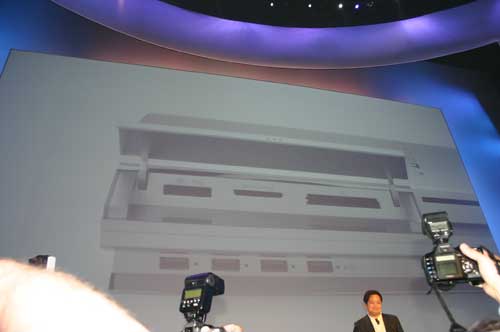
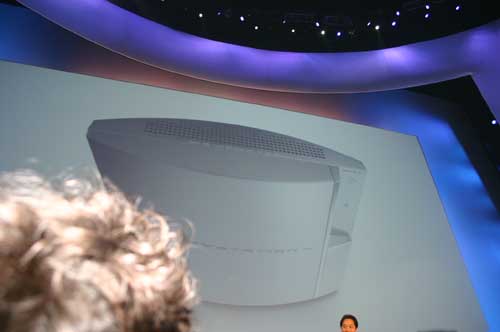
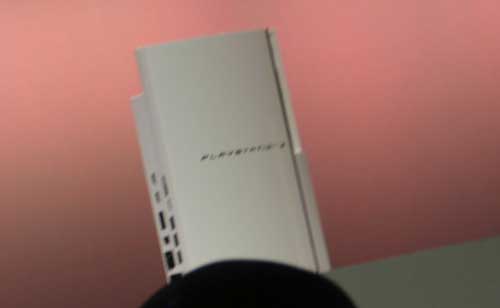
As we all know already, the Playstation 3 supports Blu-ray storage technology, marking one of the fundamental differences between it and Microsoft's Xbox 360, which will ship with a DVD drive.
Mr. Kutaragi also reaffirmed that the PS3 would feature backwards compatibility with both the original Playstation and PS2 games, potentially another major advantage over Microsoft's Xbox 360 from a developer and even a consumer standpoint. Microsoft has yet to confirm backwards compatibility for original Xbox games on their new 360 console, but we expect to find out for sure this week.

One of the most publicized features of the Playstation 3 is the new Cell processor. We've talked about Cell in great depth already, but here's how it applies to the Playstation 3:

Contrary to the rumors we've heard, it looks like the PS3 will implement the Cell processor that we all were introduced to a few months ago - featuring a single PPE and 8 SPEs. There is one caveat however; the Cell processor in the PS3 will only feature 7 working SPEs, one will remain disabled in order to improve yields.
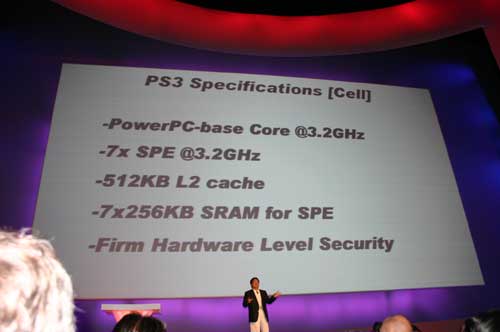
The processor will also feature a 512KB L2 cache and each SPE will feature 256KB of local memory, all running at 3.2GHz built on a 90nm process.
The Cell in PS3 can decode up to 12 HD streams simultaneously at full frame rate.
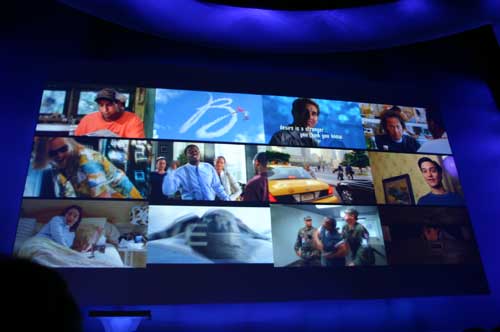
Sony also showed off Cell displaying 1000 movie thumbnails at the same time:
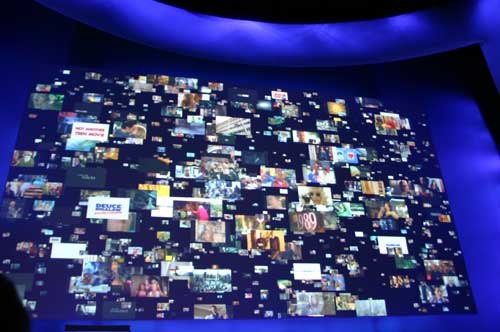
With one fewer SPE than we originally expected, Cell continues to be the shining star of the PS3 and we aren't disappointed with its implementation in the console.
Playstation 3 Storage and Outputs
The PS3 will support a number of optical storage media, but fundamentally the PS3 will be a Blu-ray machine.
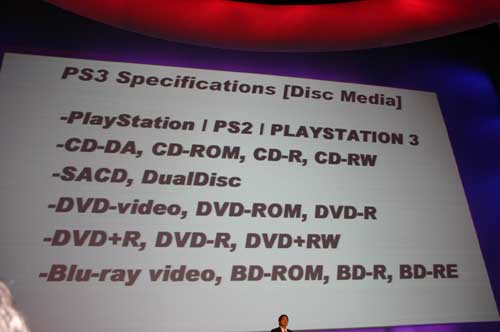
The PS3, like the Xbox 360, will feature a removable 2.5" HDD. No word on size.
The Playstation 3 will also have a two port GigE router according to the presentation, as well as built-in Wi-Fi 802.11b/g.
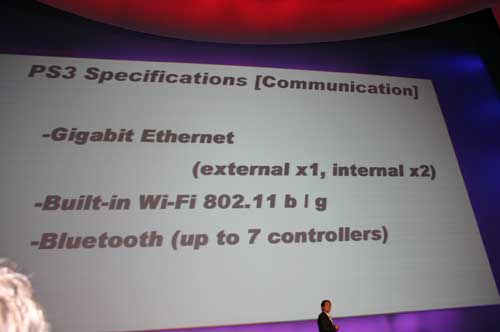
The PS3 will support up to 7 controllers using its internal Bluetooth controller (compared to Xbox 360's 4 controller support). The implication is that PS3 will use Bluetooth wireless controllers by default.
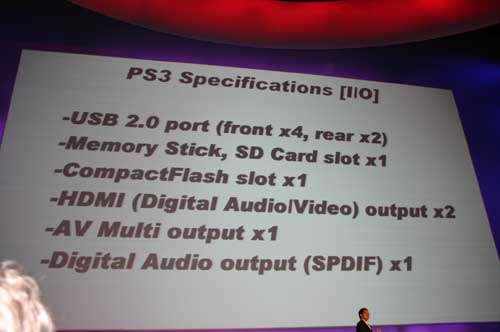

You will also be able to connect to the PS3 using a PSP over a WiFi connection.
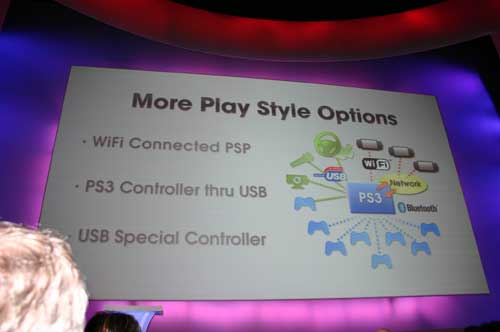
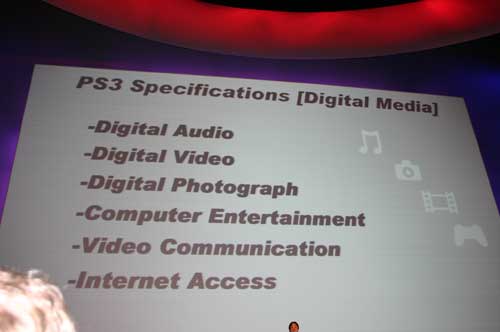
Playstation 3's GPU - The NVIDIA RSX Reality Synthesizer
NVIDIA's contribution to the PS3 is their RSX GPU.
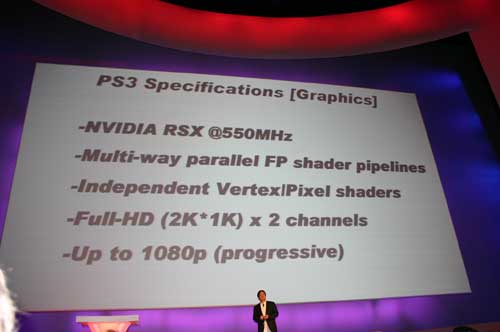
The RSX GPU offers dual screen output, with each output offering a resolution of up to 1080p resolution (1920 x 1080). The GPU runs at 550MHz and is connected to 256MB of local GDDR3 memory running at 700MHz.
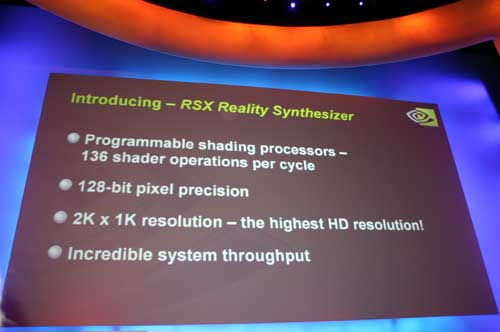
The GPU itself can process 136 shader operations per cycle, compared to 53 shader ops per cycle of the current GeForce 6 GPU. In terms of shader performance, the RSX is clearly more powerful than even two GeForce 6 GPUs.
The RSX GPU features over 300 million transistors built on an eight layer 90nm process; note that the combination of the RSX GPU and the Cell CPU in PS3 is close to 600 million transistors.
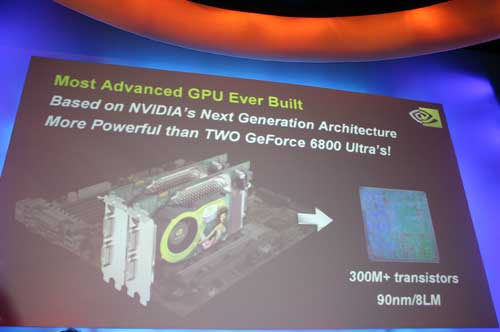
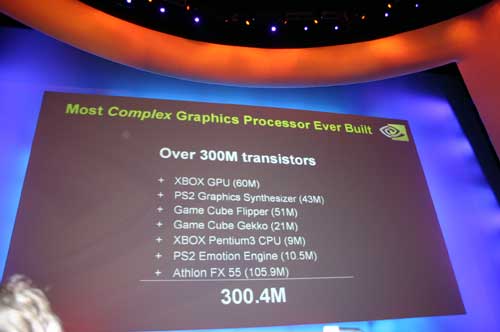
NVIDIA also mentioned that the RSX offers performance stronger than two GeForce 6800 Ultra SLI GPUs and is based on their next-generation GF70 architecture.
The architecture itself is a bit different than what we've seen from previous NVIDIA GPUs:


The RSX GPU is connected to the Cell by a 35GB/s link (20GB/s write, 15GB/s read), that's much more bandwidth than any present day CPU-GPU link on the PC side.
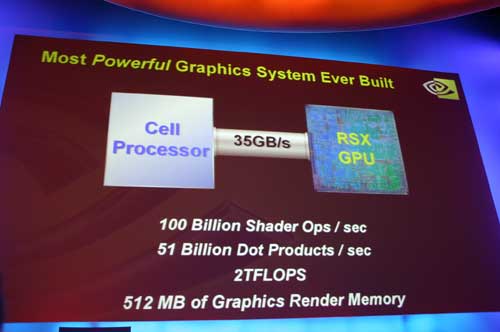
The RSX can render pixels to any part of memory, giving it access to the full 512MB of memory of the PS3. We'd expect the technology used here to be similar to NVIDIA's TurboCache that we've seen on the desktop.
Dual HD Output
If you are fortunate enough to have two 16:9 HD displays, the PS3 will support a panorama 32:9 viewing mode that will span both displays.
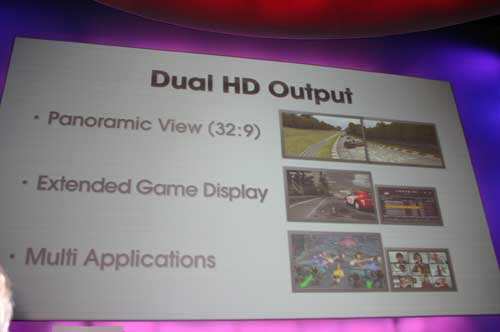
You should also be able to use the two outputs independently of one another.
Network Support
HD IP Camera
Sony also indicated that there would be support for a HD IP camera with the PS3.
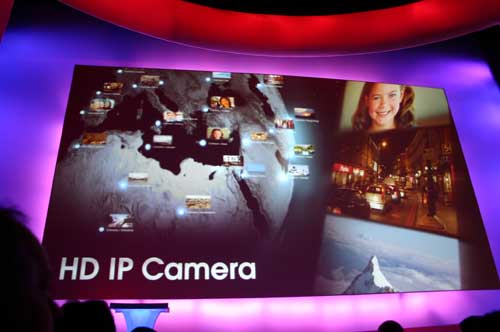
Unlike previous Playstation consoles, the PS3 will ship with full network support built in. Sony also mentioned that the console would support encrypted P2P transfers between consoles.

Playstation 3 Demos
There were far too many demos to even begin to list here, the most impressive of all were those that were of new games made specifically for PS3. You'll surely be able to find videos of them online shortly, so we'll only show a few screenshots here.
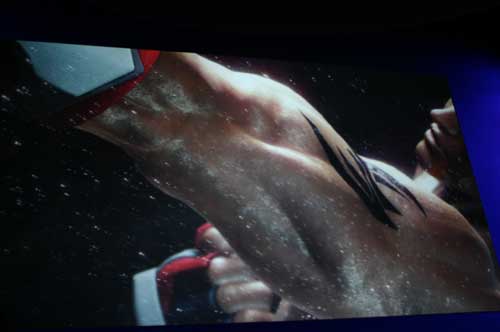
Tekken on PS3

Gran Tourismo on PS3
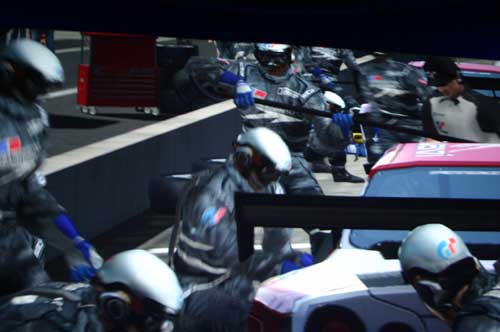
GT on PS3 once more
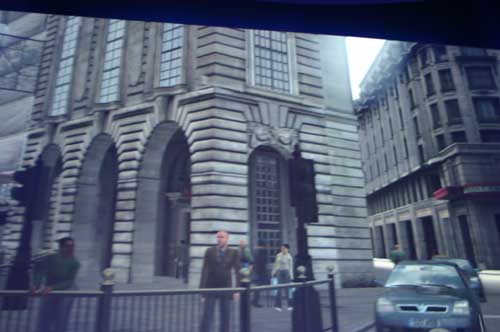
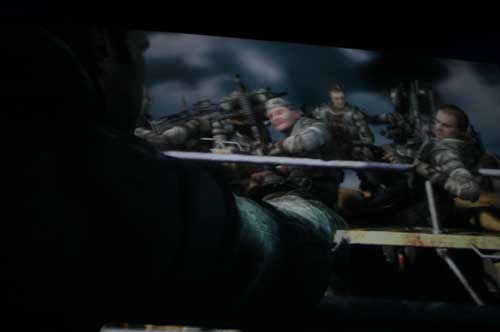
One of the demos involved the Cell processor simulating an explosion:
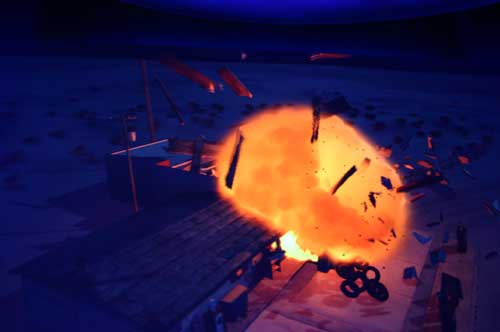
Note that the explosion was "physically correct" and this wasn't an animation created by any artists, it was all physics driven. Of course we don't know exactly how physically correct the demo was, but it did look fairly convincing - especially given the number of exploding gas stations we've seen.
Sony also demoed an interaction between Spiderman and the cars in Gran Tourismo running on PS3. The graphics themselves were quite convincing, but once again we weren't looking at a real game demo.
Unreal Engine 3 on PS3
After only two months with PS3 hardware, Tim Sweeney and the rest of the team at Epic Games put together one of the most amazing demos we have ever seen of graphics driven by the NVIDIA RSX GPU.

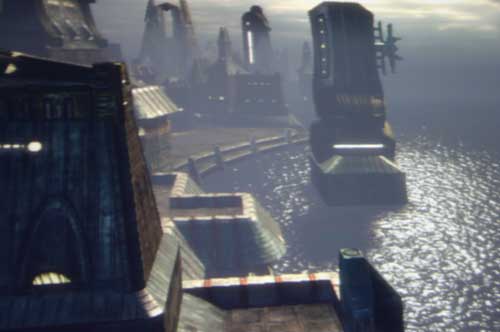
The Unreal 3 engine demo on the PS3 was the world's first demo of a working game engine on PS3 hardware. The demo ran at a 720p resolution.
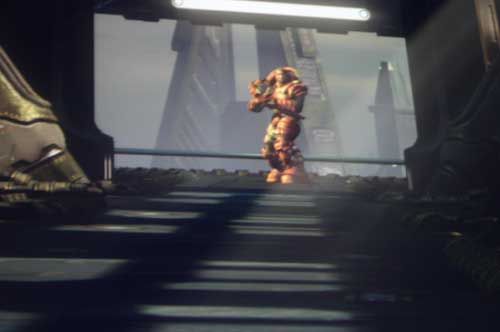
Our camera shots can't possibly convey the incredible quality and impact of ' demo, which was rendered entirely in real time on PS3 hardware (no indication whether or not it was a dev kit or an actual prototype PS3).
EA Studio's Fight Night PS3
Fight Night PS3 was also demoed, showcasing impressive graphics, facial emotions and physics running on PS3 hardware:


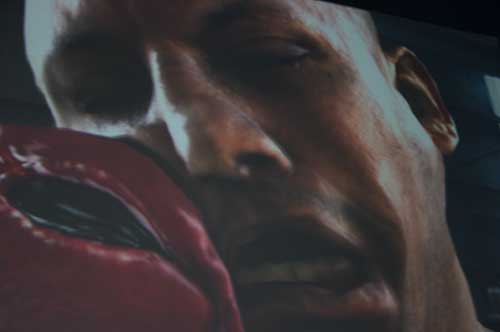
The frame rate wasn't perfectly smooth, but the demo was impressive nonetheless.
Final Fantasy XII
There was also a pre-rendered FF XII demo, however it seems like the game will be released as a PS2 title that is playable on PS3 hardware.
Square also ran a tech demo of Final Fantasy VII on PS3 hardware, but they have no plans to release a remake of FF VII, the demo was simply one to show their support for the platform.

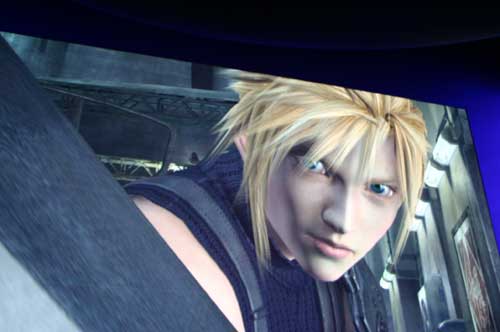
Aliasing in PS3 Demos?
One thing we noticed in most of the PS3 demos was that there was still varying amounts of aliasing in the demos; some demos were better than others, but none were perfect. At the same time, a lot can change between now and the PS3's release.
Final Words
We don't really have any more words for the PS3 at this point - we were amazed by its technology, by the demos, but at the same time Spring 2006 is a full year from now. More on PS3 and Xbox 360 this week...
Update: I've posted some more PS3 and Xbox 360 thoughts in my blog if you're interested in more analysis on today's announcement.







